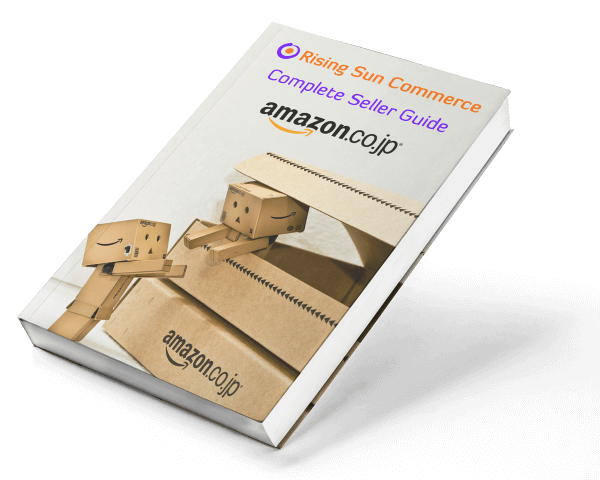Amazon advertising has become an essential tool for businesses looking to increase their visibility and drive sales on the platform. With millions of products competing for attention, it’s crucial to have a solid advertising strategy in place. One key aspect of successful Amazon ads is understanding and utilizing the concept of revenue per click (RPC). In this article, we will explore the power of revenue per click and how it can help you master your Amazon advertising campaigns.
The video below summarises this article in just 2 minutes.
What you’ll learn by reading this article
Read this and you’ll learn about the concept of revenue per click and how it can be used as a guiding metric for managing ads on a cost per click basis. You will also learn about different approaches to managing ACoS in Amazon advertising campaigns, including adjusting bids based on target cost per click and using revenue per click as a key performance indicator. This article emphasizes the importance of aligning costs with sales targets, optimizing bids, and maximizing sales across different placements on Amazon.
Additionally, you will gain insights into bid adjustments, keyword optimization, and the limitations of AI tools in managing campaigns. We’ll discuss the importance of maintaining consistent conversion rates, analyzing data at an aggregated level, and adjusting CPCs when harvesting keywords. Overall, the article provides strategies and insights for effectively managing ACoS, optimizing bids, and increasing profitability in Amazon advertising campaigns.
Introduction
Revenue per click is a metric that measures the amount of revenue generated per click on your Amazon ads. It is calculated by dividing your total sales by the total number of clicks. This metric provides valuable insights into the effectiveness of your advertising campaigns and helps you make informed decisions about your bidding strategy.
The Importance of Revenue Per Click
Revenue per click is a game-changer when it comes to managing your Amazon ads. It serves as a guiding light, helping you optimize your campaigns for maximum profitability, ranking, and investment levels. By focusing on revenue per click, you can align your cost per click with your sales targets and drive better results.
Maximizing Profitability
One of the primary goals of any advertising campaign is to drive sales while maintaining profitability. Revenue per click allows you to calculate your target cost per click based on your desired average cost of sale (ACoS) and the average number of sales generated per click. By multiplying your revenue per click by your target ACoS, you can determine your target cost per click. This helps you bid strategically and ensure that your advertising spend aligns with your profitability goals.
Boosting Ranking
Ranking plays a crucial role in the success of your Amazon products. Higher rankings lead to increased visibility and, ultimately, more sales. Revenue per click helps you manage your bids effectively, ensuring that you are bidding more aggressively on keywords that drive better sales performance. By focusing on revenue per click, you can optimize your bids for maximum sales and improve your product’s ranking on Amazon.
Managing Investment Levels
For businesses with fixed advertising budgets, managing investment levels is crucial. Revenue per click allows you to adjust your bidding strategy to control your spend and stay within your budget. By lowering your target ACoS, you can reduce your cost per click and slow down your spend while still driving sales. This flexibility helps you make the most of your advertising budget and achieve your desired investment levels.
The Relationship Between CPC and ACoS
Some advertisers may argue that reducing their cost per click (CPC) can lead to an increase in their ACoS. While this can be true in certain scenarios, it is essential to understand the underlying factors at play. The correlation between CPC and ACoS depends on various elements, such as search term performance, placement settings, and conversion rates.
Search Term Performance
When managing your Amazon ads, it’s crucial to consider the performance of individual search terms. Different search terms may have varying conversion rates and ACoS. By using revenue per click, you can identify high-performing search terms and adjust your bids accordingly. This ensures that you are investing more in keywords that drive better sales performance and maximizing your advertising efforts.
Placement Settings
Placement settings also play a significant role in the correlation between CPC and ACoS. Different placements, such as top of search and product pages, have varying conversion rates and CPCs. By adjusting your bids for specific placements, you can optimize your advertising spend and drive better results. It’s essential to consider the performance of each placement and adjust your bids accordingly to achieve your desired ACoS.
Conversion Rates
Conversion rates can fluctuate based on various factors, such as seasonality, product availability, and keyword relevance. When managing your bids, it’s crucial to monitor and analyze conversion rates to ensure that your advertising spend aligns with your sales targets. By using revenue per click, you can factor in conversion rates and adjust your bids to maximize sales within your desired ACoS.
Conclusion
Mastering Amazon ads requires a deep understanding of key metrics and strategies. Revenue per click is a powerful tool that can help you optimize your advertising campaigns for profitability, ranking, and investment levels. By focusing on revenue per click, you can align your cost per click with your sales targets and drive better results on the Amazon platform.
Incorporating revenue per click into your advertising strategy allows you to make data-driven decisions and maximize the effectiveness of your campaigns. Whether you are a small business or a large brand, understanding and utilizing revenue per click can give you a competitive edge in the Amazon marketplace.
We hope this article has provided valuable insights into the power of revenue per click and its impact on your Amazon advertising success.
